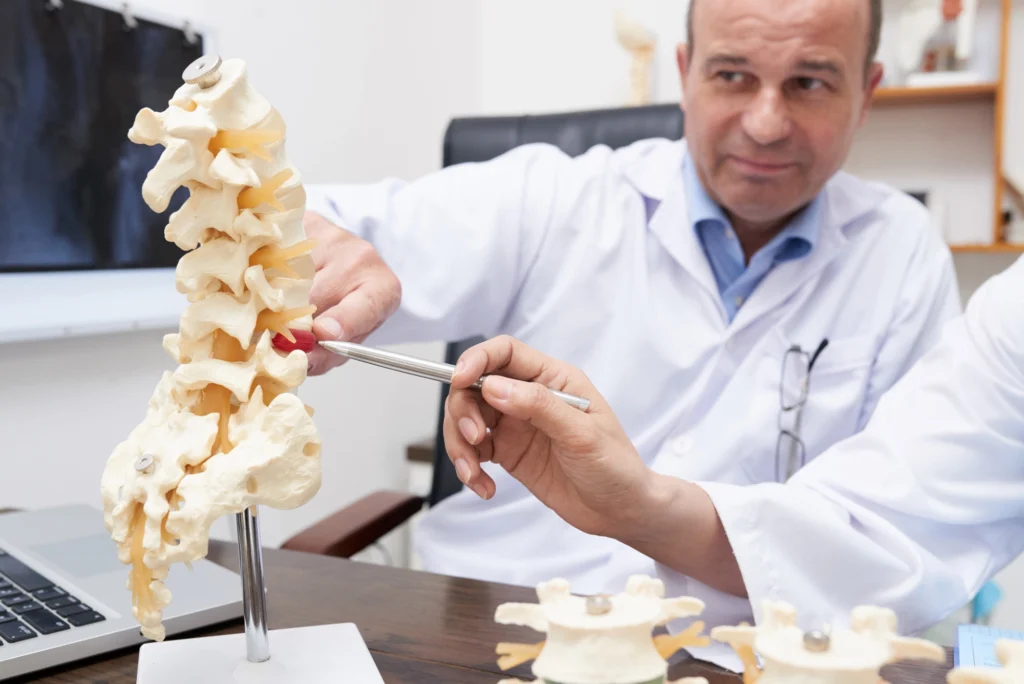
Table of Contents
ToggleMinimally invasive spine surgery (MIS) has transformed the landscape of spine surgery, presenting patients with a less invasive option compared to traditional open surgery, accompanied by numerous advantages.
This article seeks to shed light on the diverse conditions that can be addressed with MIS, assisting you in determining if you might be a suitable candidate for this groundbreaking technique.
We will explore the benefits of MIS, typical indications for the procedure, and delve into specific case studies to offer a comprehensive understanding of minimally invasive spine surgery indications.
Minimally invasive spine surgery has a multitude of benefits compared to traditional open surgery.
These benefits include:
There are various spinal conditions that can be treated with MIS procedures. Some of the most common indications for minimally invasive spine surgery include:

Various minimally invasive techniques are employed to treat different spinal conditions.
These techniques include:

Lumbar disc herniation can cause leg pain, numbness, or weakness when a herniated or bulging disc pinches a nerve. In a minimally invasive procedure, surgeons use a muscle-splitting percutaneous technique to place a tubular retractor through a small incision and access the spinal column.
A small bony resection, called laminectomy, is performed to reach the spinal canal, retract the nerve, and remove the herniated disc. This approach avoids the large incision and muscle stripping associated with traditional open surgery and can be performed in an outpatient setting.
Thoracic disc herniation surgery can be more challenging compared to lumbar disc herniation due to the presence of the spinal cord. Traditional posterior approaches carry high risks and have been largely abandoned.
Instead, minimally invasive techniques like mini-open lateral thoracotomy and retropleural microdiscectomy utilize a 6-7 cm skin incision and limited rib resection to safely remove the thoracic herniated disc without violating the pleural cavity.
Instrumentation and fusion are not required, and the rate of postoperative complications is low
Spinal stenosis occurs when the vertebral column narrows abnormally due to disc degeneration, thickened ligaments, or synovial cysts, causing pressure on the spinal cord or nerve roots.
Surgical treatment involves removing the posterior bony structure and thickened ligaments to widen the spinal canal (laminectomy) or nerve root tunnel (foraminotomy).
Compared to traditional open surgery, which requires stripping the paraspinal muscles and weakening the posterior tension band, MIS techniques allow for bilateral decompression through a unilateral tubular retractor and a small incision.
This method preserves the posterior tension band to prevent post-laminectomy flat back syndrome and can generally be performed in an outpatient setting.
Patients with advanced degenerative spinal disease may experience severe disc degeneration, canal or nerve root tunnel stenosis, resulting in low back pain, leg pain, numbness, weakness, or difficulty ambulating.
In cases with multilevel degenerative disease, decompression, instrumentation, and fusion may be necessary.
MIS techniques use small corridors to access the disc spaces through small posterior or lateral incisions, allowing for discectomy and interbody fusion.
The rods and screws can be placed percutaneously using multiple small skin incisions.
With a small incision and meticulous dissection, dilators and retractors are placed to safely reach the lateral aspect of the spine under the guidance of neuromonitoring and x-rays.
Once the disc space is reached, discectomy and interbody fusion can be performed, with distraction of the disc space allowing effective decompression of pinched nerves without direct bony removal.
Traditional approaches require long incisions and extensive detachment of muscles from the spine column. MIS techniques allow percutaneous (through the skin) placement of screws and rods using small skin incisions without cutting the underlying muscles or ligaments.
With the guidance of x-rays or navigation systems, surgeons accurately place the screws into vertebrae along the desired path. These screws have temporary extenders that are removed after assisting in guiding passage to rods that connect and secure the screws.
Spinal deformities include scoliosis and sagittal malalignment. Traditional open surgery requires large exposure for decompression, instrumentation, and fusion. MIS approaches utilize a lateral approach to restore disc height, achieving decompression.
A large footprint cage spanning across the hardest part of the vertebral bodies is placed to provide correction and stability. When a more robust correction is needed, percutaneous pedicle screws and rods can be added in conjunction with the lateral interbody fusion.
In some cases, patients with scoliosis may benefit from a combination of MIS techniques to achieve the best possible correction while minimizing tissue damage and blood loss.
Spinal fractures, such as compression fractures or unstable fractures, can result from trauma, osteoporosis, or cancer. In cases where conservative treatments fail or the fracture is unstable, MIS techniques can be employed to stabilize the spine and relieve pain.
One common procedure is kyphoplasty, in which a small incision is made, and a specialized needle is inserted into the fractured vertebra under x-ray guidance. A balloon is then inflated to create a cavity, which is filled with bone cement to stabilize the fracture.
Spinal infections and tumors may require surgery to remove the source of infection or tumor, decompress the spinal cord or nerve roots, and stabilize the spine.
MIS techniques can be employed in selected cases, using small incisions and specialized retractors to access the infected or tumorous tissue.
By minimizing the incision and tissue dissection, MIS can help to reduce blood loss, postoperative pain, and recovery time.
Minimally invasive spine surgery has transformed the field of spine surgery, offering patients a less invasive alternative to traditional open procedures.
With a multitude of benefits, including reduced tissue injury, decreased blood loss, less postoperative pain, and faster recovery times, MIS can be an ideal option for many patients. However, not all patients are suitable candidates for MIS, and a thorough evaluation by a spine specialist is necessary to determine the best treatment approach.
If you suffer from a spinal condition and think you may be a candidate for minimally invasive spine surgery, consult with a spine specialist to discuss your options and explore the various minimally invasive spine surgery indications.
Remember that each patient’s situation is unique, and the best treatment plan will depend on your individual circumstances and the expertise of your spine surgeon.
GET IN TOUCH +
285 Sills Road
Building 5-6, Suite E
East Patchogue, NY 11772
(631) 475-5511
184 N. Belle Mead Road
East Setauket, NY 11733
(631) 675-6226
GET IN TOUCH +
285 Sills Road
Building 5-6, Suite E
East Patchogue, NY 11772
(631) 475-5511
184 N. Belle Mead Road
East Setauket, NY 11733
(631) 675-6226
SUBSCRIBE TO OUR NEWSLETTER +
Send us a Google review. Click this link and let us know how we did!
Review us on Yelp too.